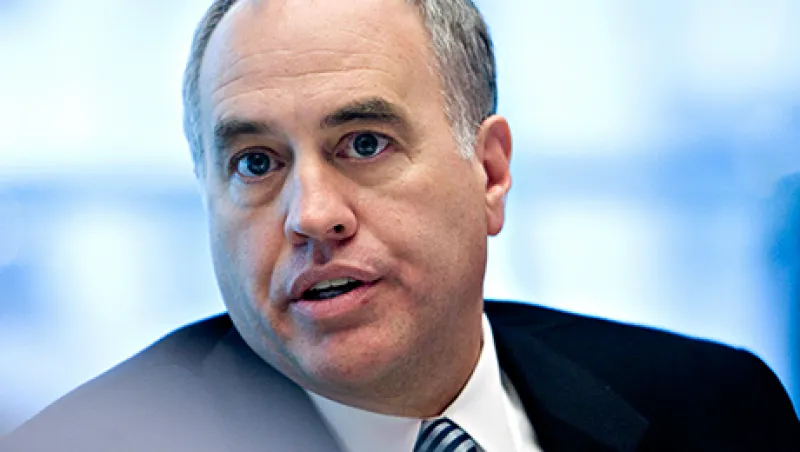New York State Comptroller Thomas DiNapoli takes nothing for granted.
Since 2007, when the New York State legislature appointed him, DiNapoli has shown a progressive bent by striving to restore a higher level of ethics and transparency to his office. This push stems from recent scandals, he says. DiNapoli’s predecessor, Alan Hevesi, resigned as part of a plea deal after being accused of misusing state employees to care for his ill wife and was later imprisoned for corruption. Because of the circumstances under which he came into office, DiNapoli has had to earn the public’s trust. His efforts have paid off: He was elected twice, in 2010 and 2014.
“He may be one of the most unique politicians that we’ve seen in New York State history,” says veteran political consultant Hank Sheinkopf, whose past clients include Mike Bloomberg, Bill Clinton and former New York governor Eliot Spitzer. “He’s perfectly satisfied to be where he is and to get up and do this job every day.”
Soon after being sworn in, DiNapoli launched a series of reforms at the New York State Common Retirement Fund, including the creation of an aggressive Pension Fund Task Force. Among his other changes to date: a ban on so-called pay-to-play practices that prohibits the fund from working with investment advisers who have donated to the state comptroller or a candidate for the post, more third-party oversight and monthly reporting of investment transactions.
“A big part of what we’re known for is managing the third-largest public pension fund in the nation, which we’ve been doing under difficult circumstances,” DiNapoli, 62, tells Institutional Investor. New York State Common has grown to $189.4 billion from $156.6 billion in 2007, having hit a low of $100.9 billion in 2009.
In New York State and elsewhere, public pension funds have come under attack in recent years. For example, New Jersey Governor Chris Christie has cut payments to his state’s underfunded pension system and argued that it should become a hybrid of a defined benefit and a defined contribution plan. U.S. public pensions are only 80 percent funded, according to the Lexington, Kentucky–based Council of State Governments.
DiNapoli, who holds a master’s degree in human resources management from the New School and served as a member of the New York State Assembly from 1987 through 2007, has spoken up for defined benefit pensions and their cost-effectiveness. He’s also worked toward integrating environmental, social and governance (ESG) considerations into New York State Common’s investment strategy. In December the Office of the State Comptroller (OSC) announced a $5 billion commitment to sustainable investments, the first of which is the creation of a $2 billion index that will exclude or reduce allocations to coal-mining companies and other businesses with a big carbon footprint.
Besides being the fund’s sole fiduciary, DiNapoli and his office publish audits of state agencies, public authorities and local governments, and reports on issues that affect New Yorkers. The OSC recently challenged the Metropolitan Transportation Authority’s subway delay statistics as misleading and released its latest annual report on Wall Street bonuses, which have declined since 2013. “Both the state and city budgets depend heavily on the securities industry, and lower profits could mean fewer industry jobs and less tax revenue,” DiNapoli wrote in a March 7 statement on this year’s Wall Street report.
The veteran politician developed a zeal for social improvement early in life. “There was that cauldron of activism and engagement that had a big impact on me in my formative years,” DiNapoli recalls of the 1960s and ’70s, citing the women’s and civil rights movements. At age 18 he became a trustee of the Mineola Board of Education on his native Long Island, an achievement that made him New York State’s youngest elected official at the time.
DiNapoli, who’s running for reelection in 2018, has no plans to slow down. “In an era where, post–Great Recession, people care about finances both personal and at the state level, I think the work of this office is more relevant in these tough times than ever,” he says.






